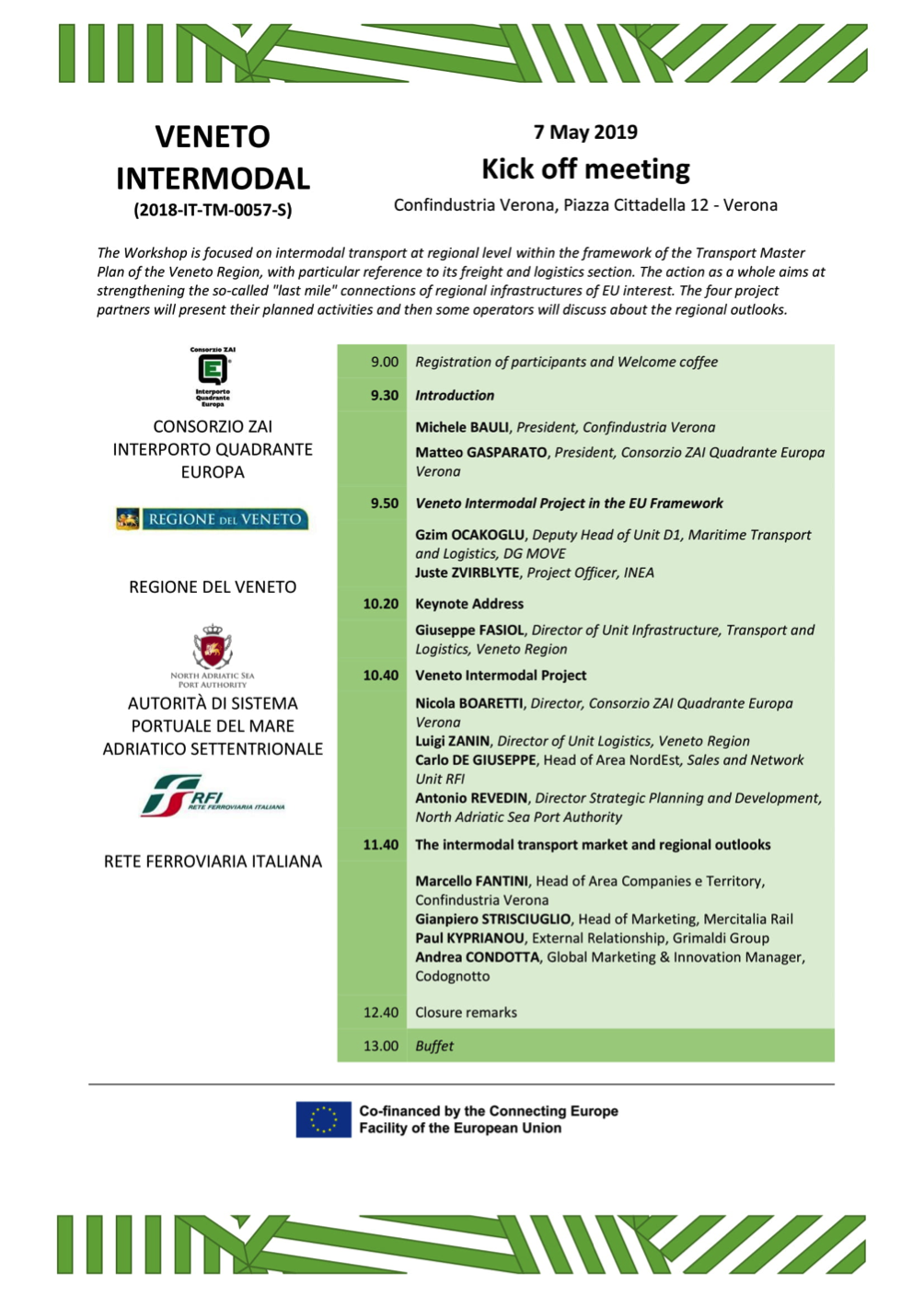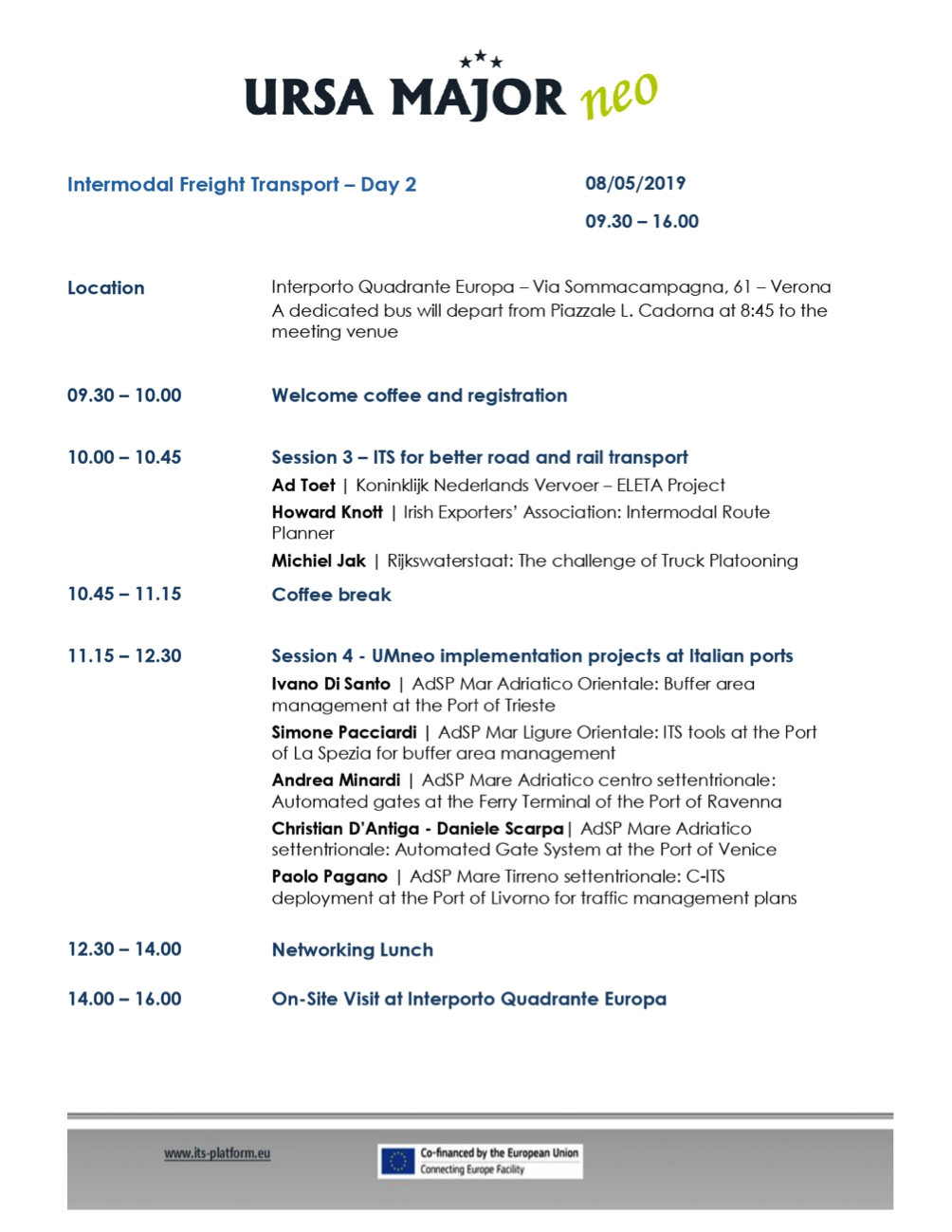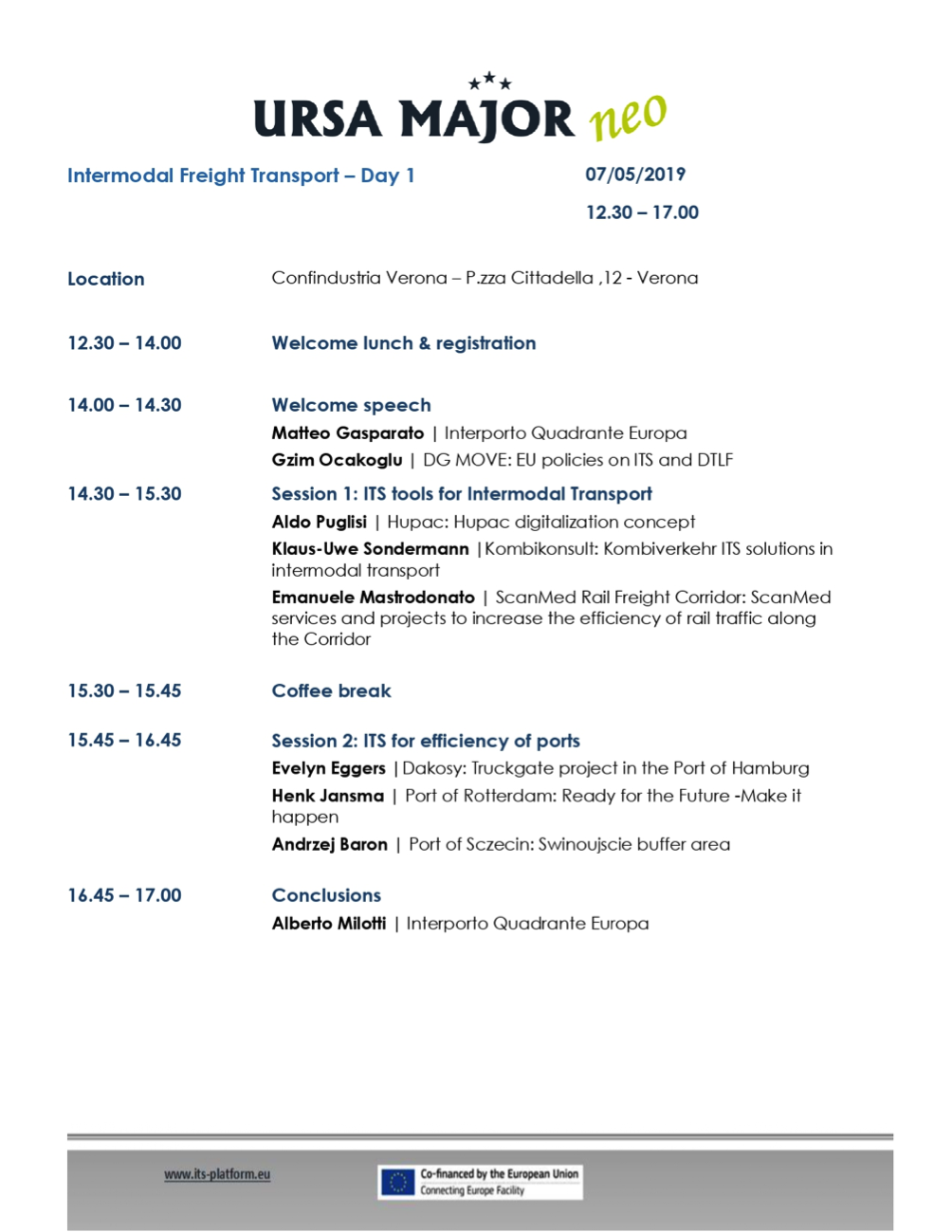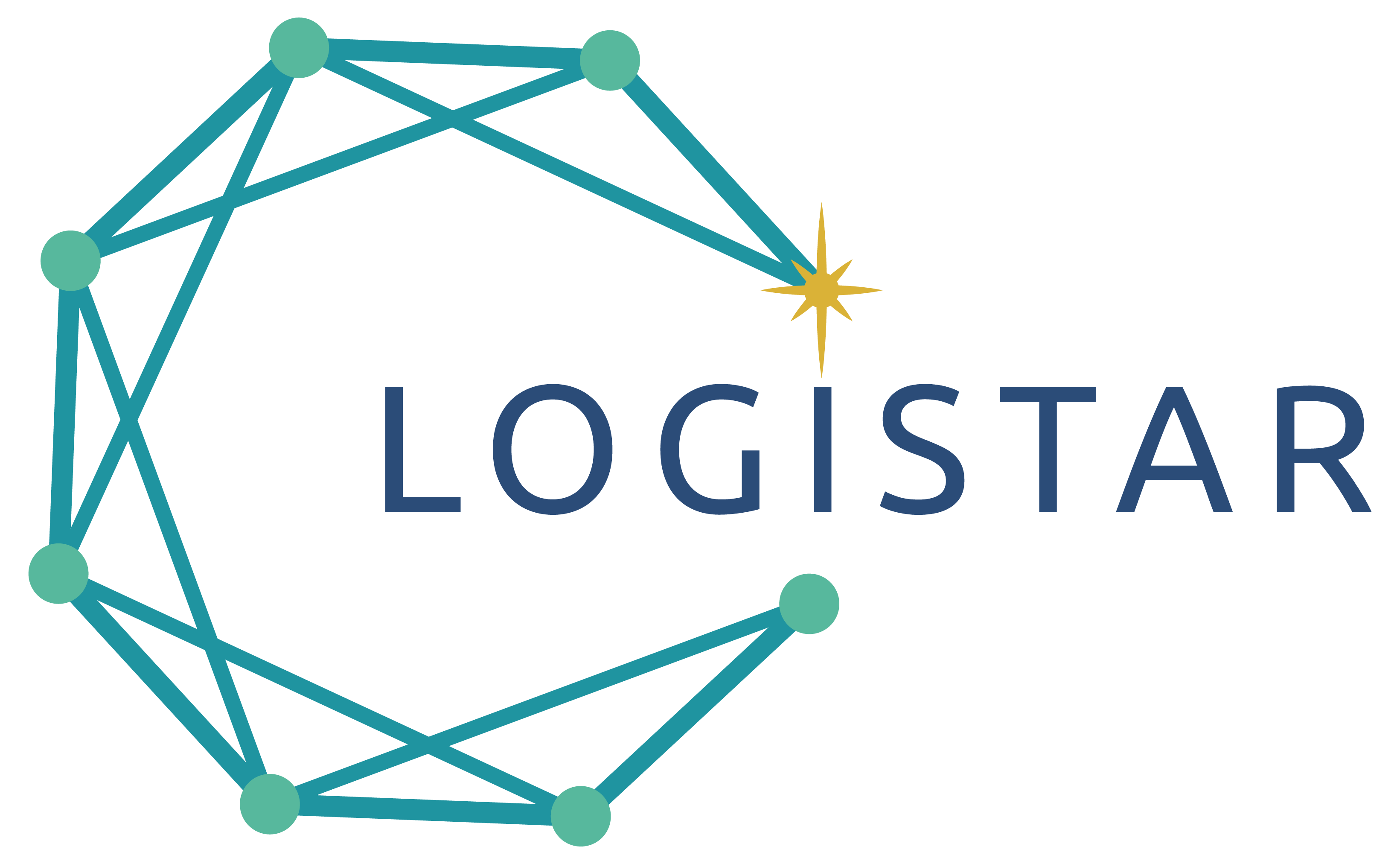Veneto Intermodal – Kick-off Meeting – Verona, May 7-8, 2019
Veneto Intermodal – Kick-off Meeting – Verona, May 7-8, 2019
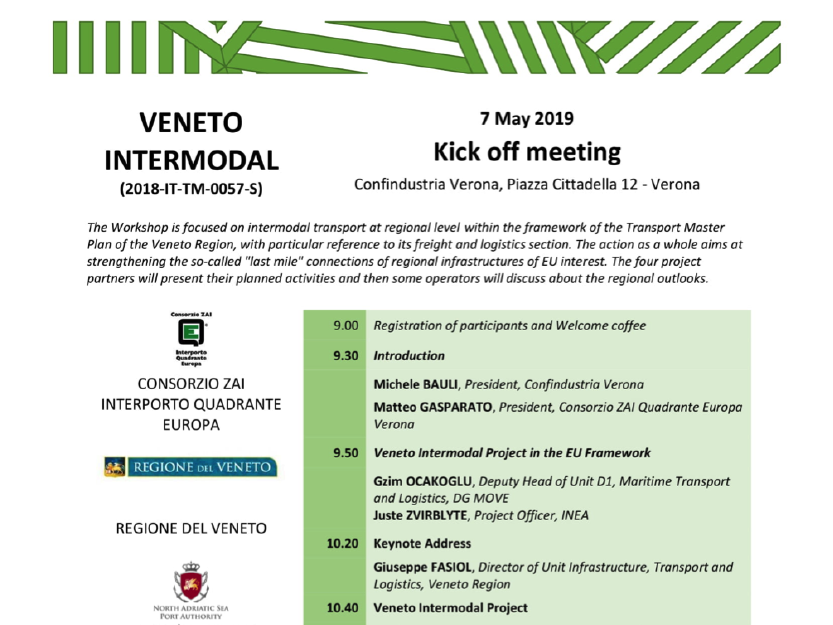
From the 7th to the 8th of May, there were both the kick-off meeting of Veneto intermodal and the workshop of Ursa Major Neo. These are European projects funded by the CEF program. Veneto Intermodal is an important project for the freight village of Verona because it will finance the executive project to expand the intermodal terminals. The aim is to be ready to the Brenner Basis Tunnel (BBT) opening in 2027. Verona is the hub for the goods coming from the north of Europe to Italy and vice versa, and it must expand its terminals to manage longer trains. In fact, after the BBT opening trains 750 meters-long will be able to travel on the railway line to and from Verona. Currently, the slope on the Brenner Pass is 27‰ and two locomotives are necessary to tow a train 600 meters-long, up to 1,500 tonnes. The BBT will have a slope of 4‰ so longer and heavier trains will be able to travel in it. Therefore, the expansion of the Verona’s terminals is essential in order to become the gateway of the northern Europe. The partners involved in Veneto Intermodal are Consorzio ZAI (the infrastructure manager of the inland terminal of Verona) that is also the Lead Partner, RFI (the Italian railway infrastructure manager), Venice Port Authority and Veneto Region. During the kick-off meeting, each partner has described the works foreseen to enhance its business activity. These physical interventions are necessary to improve the Italian transport network in order to achieve the European target to shift as goods as possible from the road to the rail. DG MOVE and INEA participated to the workshop explaining EU policy on multimodal transport.
In addition, the three days of event have carried on through the Ursa Major Neo “Intermodal freight transport” workshop. The main thematic that have been discussed are ITS tools to improve the intermodal transport, new software to manage freight transport and some solutions in the ports, as the smart parking areas, the management of the buffer zones, the terminal handling systems, the truck platooning and. The participants of the meeting have talked about the possible ICT solutions to solve the bottlenecks affecting the multimodal chain. They have provided an overview of the issues that are slowing the development of the rail, road and sea transport. Each panel was focused on a specific transport mode in order to analyse deeply all the point of views. It was an important meeting because in few days it was possible to merge the different transport realities, giving some guidelines useful for the future developments in this field.
http://www.quadranteeuropa.it/it/news-qe/400-veneto_intermodal.html
http://www.quadranteeuropa.it/it/news-qe/396-umneo_savethedate.html
